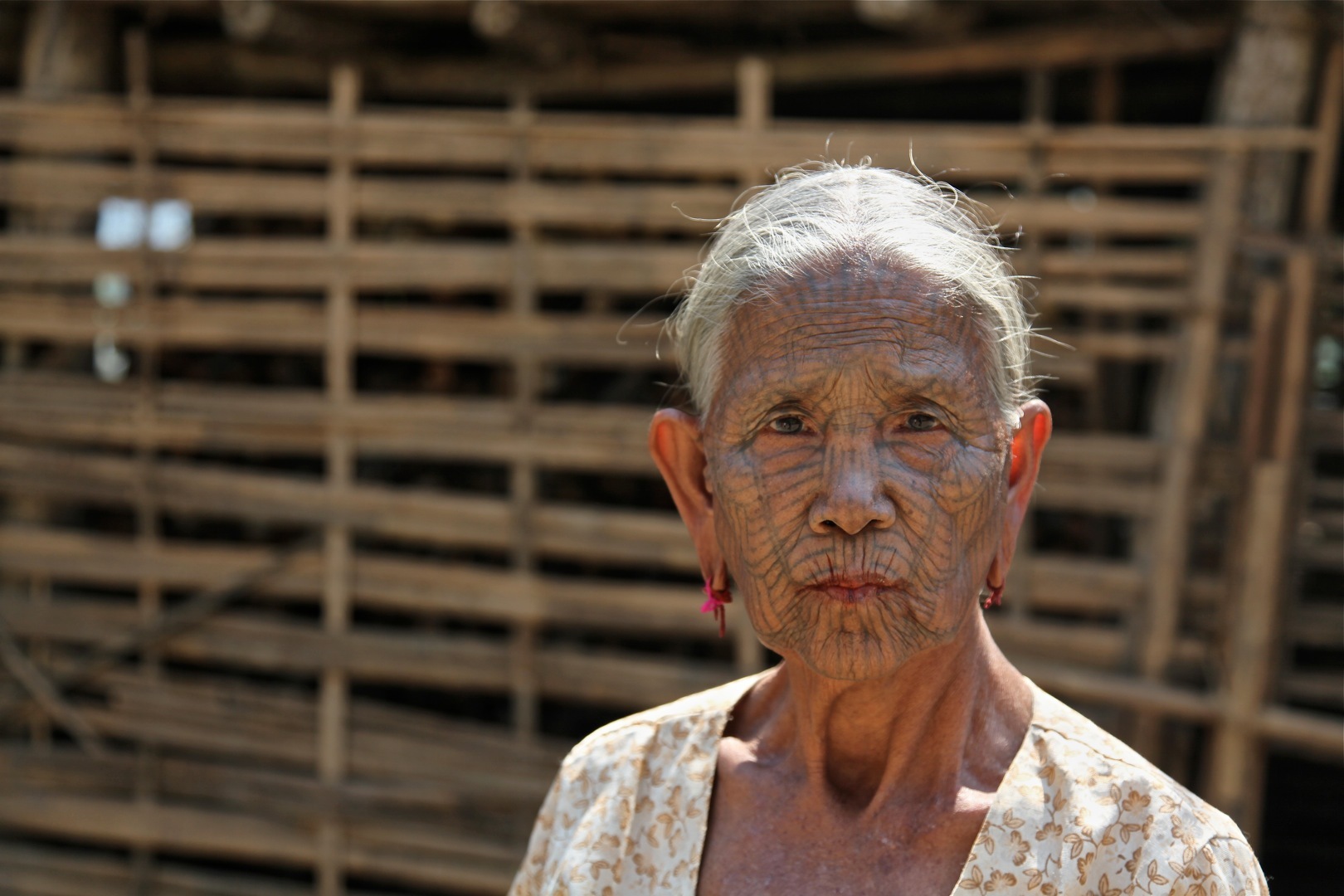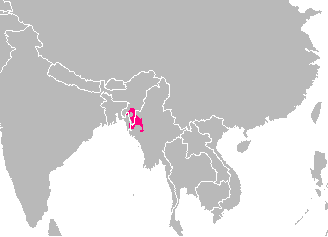|
Zotung People
Zotung people are one of the ethnic groups in Chin State in Myanmar also known as Burma. It is located in central and southern Chin State. Zotunges are a very distinct ethnic people in Burma. It is very difficult to get historical records of these ethnic people as they didn't have written languages for many years. However, their history can still be traced back as far as 900 AD since there are place names in traditional songs that reveal the time period they were composed. There are also local folk tale and legends. These people are from a Tibeto-Burman group and are familiar with all other Chin groups. They have their own written language which is unintelligible with other neighboring languages unless they learn it. These people called themselves "Zo" from the early times of their ancestors which can be traced back to 700 years ago. Neighboring tribes from the north and south called them Zo, and the Mara tribe from the west called them Azyu. From 1933, their language was recorded ... [...More Info...] [...Related Items...] OR: [Wikipedia] [Google] [Baidu] |
Chin State
Chin State (, ) is a state in western Myanmar. The Chin State is bordered by Sagaing Division and Magway Division to the east, Rakhine State to the south, Bangladesh to the south-west, and the Indian states of Mizoram to the west and Manipur to the north. The population of Chin state is about 478,801 in 2014 census. The capital of the state is Hakha. The state is a mountainous region with few transportation links. Chin State is sparsely populated and remains one of the least developed areas of the country. Chin State has the highest poverty rate of 73% as per the released figures from the first official survey. The official radio broadcasting dialect of Chin is Falam. There are 53 different subtribes and languages in Chin State. There are nine townships in Chin State: Hakha, Thantlang, Falam, Tedim, Tonzang, Matupi, Mindat, Kanpetlet and Paletwa townships. In 1896, Mindat and Kanpetlet were placed under Pakokku Hill Tracts District of British Burma later emerged into Chin h ... [...More Info...] [...Related Items...] OR: [Wikipedia] [Google] [Baidu] |
Myanmar
Myanmar, ; UK pronunciations: US pronunciations incl. . Note: Wikipedia's IPA conventions require indicating /r/ even in British English although only some British English speakers pronounce r at the end of syllables. As John C. Wells, John Wells explains, the English spellings of both Myanmar and Burma assume a non-rhotic variety of English, in which the letter r before a consonant or finally serves merely to indicate a long vowel: [ˈmjænmɑː, ˈbɜːmə]. So the pronunciation of the last syllable of Myanmar as [mɑːr] or of Burma as [bɜːrmə] by some speakers in the UK and most speakers in North America is in fact a spelling pronunciation based on a misunderstanding of non-rhotic spelling conventions. The final ''r'' in ''Myanmar'' was not intended for pronunciation and is there to ensure that the final a is pronounced with the broad a, broad ''ah'' () in "father". If the Burmese name my, မြန်မာ, label=none were spelled "Myanma" in English, this would b ... [...More Info...] [...Related Items...] OR: [Wikipedia] [Google] [Baidu] |
Tibeto-Burman Languages
The Tibeto-Burman languages are the non-Sinitic members of the Sino-Tibetan language family, over 400 of which are spoken throughout the Southeast Asian Massif ("Zomia") as well as parts of East Asia and South Asia. Around 60 million people speak Tibeto-Burman languages. The name derives from the most widely spoken of these languages, Burmese and the Tibetic languages, which also have extensive literary traditions, dating from the 12th and 7th centuries respectively. Most of the other languages are spoken by much smaller communities, and many of them have not been described in detail. Though the division of Sino-Tibetan into Sinitic and Tibeto-Burman branches (e.g. Benedict, Matisoff) is widely used, some historical linguists criticize this classification, as the non-Sinitic Sino-Tibetan languages lack any shared innovations in phonology or morphology to show that they comprise a clade of the phylogenetic tree. History During the 18th century, several scholars noticed parallels ... [...More Info...] [...Related Items...] OR: [Wikipedia] [Google] [Baidu] |
Chin Peoples
The Chin people (, ) are a Southeast Asian people native to Chin State and its neighbouring states of Myanmar.Head, JonathanBurma's 'abused Chin need help' ''BBC News'', Jan 28, 2009, accessed Jan 28, 2009 The Chin are one of the founding groups (Chin, Kachin, Shan and Bamar) of the Union of Burma. The Chin speak a variety of related languages, share elements of cultures and traditions. According to the British state media BBC News, "The Chin people... are one of the most persecuted minority groups in Burma." These people predominantly live in the Chin State, Bago Division, Ayeyarwady Division, Magwe Division, Rakhine State and Sagaing Region of Myanmar, but are also spread throughout Burma, Bangladesh and India. In the 2014 Burmese ethnic census, the Chin ethnicity was again dismissed by the people of the Chin State. It is to be noted that the Mizo people in Mizoram, India and the Chin are both Chin-Kuki-Mizo people, who share the same history with each other. The difference ... [...More Info...] [...Related Items...] OR: [Wikipedia] [Google] [Baidu] |
Mara People
The Mara are the native inhabitants of Mizoram in India, native to northeastern India, primarily in the Mara Autonomous District Council of the state of Mizoram, where they form the majority of the population. The Maras are related to Kuki and Mizos in India and Kachin, Karen, Shan and Chins in Myanmar. Significant numbers of Maras also live in the southwestern and south-central parts of Chin State (Burma) in Myanmar - the contiguous area of Mara area in India mostly separated by Kolodyne / Chhimtuipui / Beino river, which forms an international boundary. They have gone by a number of tribal names to the outside world. The Mara were earlier known as ''Magha'', ''Miram'', ''Baungshel'', ''Maring'', ''Zyu'' or ''Zao/Zho'', ''Khuangsai''. Additionally they were known as ''Lakher'' by the Tlaikao/Lushai, ''Miram'' by the Lai, and ''Shendu'' by the Khumi, Dai, Shô, Matu, and Rakhaing people. The new name ''Mara'' was added to the List of Scheduled Tribes in Mizoram state ... [...More Info...] [...Related Items...] OR: [Wikipedia] [Google] [Baidu] |
Roman Alphabet
The Latin alphabet or Roman alphabet is the collection of letters originally used by the ancient Romans to write the Latin language. Largely unaltered with the exception of extensions (such as diacritics), it used to write English and the other modern European languages. With modifications, it is also used for other alphabets, such as the Vietnamese alphabet. Its modern repertoire is standardised as the ISO basic Latin alphabet. Etymology The term ''Latin alphabet'' may refer to either the alphabet used to write Latin (as described in this article) or other alphabets based on the Latin script, which is the basic set of letters common to the various alphabets descended from the classical Latin alphabet, such as the English alphabet. These Latin-script alphabets may discard letters, like the Rotokas alphabet, or add new letters, like the Danish and Norwegian alphabets. Letter shapes have evolved over the centuries, including the development in Medieval Latin of lower-case, for ... [...More Info...] [...Related Items...] OR: [Wikipedia] [Google] [Baidu] |
Kuki People
The Kuki people are an ethnic group native to the Mizo Hills (formerly Lushai), a mountainous region in the southeastern part of Mizoram and Manipur in India. The Kuki constitute one of several hill tribes within India, Bangladesh, and Myanmar. In Northeast India, they are present in all states except Arunachal Pradesh. Some fifty tribes of Kuki peoples in India are recognised as scheduled tribes, based on the dialect spoken by that particular Kuki community as well as their region of origin. The Chin people of Myanmar and the Mizo people of Mizoram are kindred tribes of the Kukis. Collectively, they are termed the Zo people. History Early history The early history of the Kukis is obscure. The origin of the word "Kuki" is uncertain; it is an exonym: it was not originally as a self-designation by the tribes that are now called Kukis. According to the colonial British writer Adam Scott Reid, the earliest reference to the word Kuki can be dated to 1777 CE, when it first appear ... [...More Info...] [...Related Items...] OR: [Wikipedia] [Google] [Baidu] |
Christianity
Christianity is an Abrahamic monotheistic religion based on the life and teachings of Jesus of Nazareth. It is the world's largest and most widespread religion with roughly 2.38 billion followers representing one-third of the global population. Its adherents, known as Christians, are estimated to make up a majority of the population in 157 countries and territories, and believe that Jesus is the Son of God, whose coming as the messiah was prophesied in the Hebrew Bible (called the Old Testament in Christianity) and chronicled in the New Testament. Christianity began as a Second Temple Judaic sect in the 1st century Hellenistic Judaism in the Roman province of Judea. Jesus' apostles and their followers spread around the Levant, Europe, Anatolia, Mesopotamia, the South Caucasus, Ancient Carthage, Egypt, and Ethiopia, despite significant initial persecution. It soon attracted gentile God-fearers, which led to a departure from Jewish customs, and, a ... [...More Info...] [...Related Items...] OR: [Wikipedia] [Google] [Baidu] |
Roman Alphabets
The lists and tables below summarize and compare the letter inventories of some of the Latin-script alphabets. In this article, the scope of the word "alphabet" is broadened to include letters with tone marks, and other diacritics used to represent a wide range of orthographic traditions, without regard to whether or how they are sequenced in their alphabet or the table. Parentheses indicate characters not used in modern standard orthographies of the languages, but used in obsolete and/or dialectal forms. Letters contained in the ISO basic Latin alphabet Alphabets that contain only ISO basic Latin letters Among alphabets for natural languages the English, 6/sup> Indonesian, and Malay alphabets only use the 26 letters in both cases. Among alphabets for constructed languages the Ido and Interlingua alphabets only use the 26 letters. Extended by ligatures * German (ß), French (æ, œ) Extended by diacritical marks * Spanish (ñ), German (ä, ö, and ü), Dutch (ë) ... [...More Info...] [...Related Items...] OR: [Wikipedia] [Google] [Baidu] |
.png)



